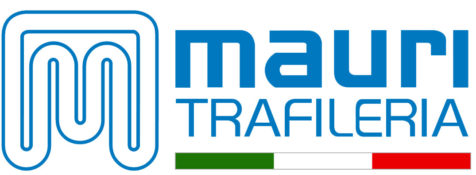Defects are flaws which due to their nature, size, position inside a piece are considered by the standard or by the applicable inspection specification to be detrimental to the material use.
In particular surface defects are discontinuities appearing on the surface, detectable by visual check or by non destructive test (eddy currents, magnetoscopic test, test by penetrating fluids etc) and without material removal.
Classification of surface defects on the basis of the processing giving rise to them:
 Defects formed during the production of hot rolled products:
Defects formed during the production of hot rolled products:
Among the most distinctive defects we can find:
Rolling cracks, scales and material laps etc.
 Defects formed during cold processing. Among the most distinctive defects we can find:
Defects formed during cold processing. Among the most distinctive defects we can find:
Stress cracks, isolated grooves and lines
 Defects due to wrong handling .
Defects due to wrong handling .
Among the most distinctive defects we can find:
Cuts and abrasions.
The general standard for cold-finished products deals thoroughly with material surface quality and the relevant defects.
As defects like cracks, scales, laps cannot be completely eliminated during production of warm rolled products and cannot even be removed by drawing, a quality standard should be agreed by supplier and customer.
UNI EN 10277-1:2008 supports us.
It defines 4 surface quality classes:
Classes 1, 2 and 3 refer to drawn products with round, square, hexagonal section or to flat products.
Class 4 refers only to peeled or ground products.
Let’s see in detail the parameters differentiating the surface quality classes:
- Allowable defect depth
- Mass percentage of delivered product with defects exceeding the specified defect level.
- Limitation in the class choice due to the product shape (round, square, hexagon etc.)
Below you will find a table summarizing the content of the European standard UNI EN 10277 –1:2008
| Surface quality classes | |||||||
|
1
|
2
|
3
|
4
|
||||
| Diameter or width (mm) | d ≤ 15 | d ≤ 15 | d ≤ 20 | – | |||
| Defect depth (mm) | max. 0,30 | max. 0,30 | max. 0,20 | Technically free from manufacturing cracks | |||
|
Surface quality classes
|
|||||||
|
1
|
2
|
3
|
4
|
||||
| Diameter or width (mm) | 15 < d ≤ 100 | 15 < d ≤ 75 | 20 < d ≤ 75 | – | |||
| Defect depth (mm) | max. 0,02 x d | max. 0,02 x d | max. 0,01 x d | Technically free from manufacturing cracks | |||
|
Surface quality classes
|
|||||||
|
1
|
2
|
3
|
4
|
||||
| Diameter or width (mm) | – | d > 75 | d > 75 | – | |||
| Defect depth (mm) | – | max. 1,50 | max. 0,75 | Technically free from manufacturing cracks | |||
Some simple remarks can be made:
Allowable defect depth
The test strictness degree increases progressively from class 1 to class 4.
Order example:
a) 2 t round EN 10278 – 30 h9 x length 3000 mm
EN 10277-3 – 11SMnPb37 + C – class 1
At the time of the order it was agreed that the product should be supplied in compliance with class 1.
Therefore the supplier will have to guarantee a maximum defect of 0,60 mm (0,02 x d).
b) 2 t round EN 10278 – 30 h9 x length 3000 mm
EN 10277-3 – 11SMnPb37 + C – class 3
At the time of the order it was agreed that the product should be supplied in compliance with class 3.
Therefore the supplier will have to guarantee a maximum defect of 0,30 mm (0,01 x d).
Mass percentage of delivered product with defects exceeding the specified defect level
There are defects, which due to their shape or position on the product are not easily detectable.
Although their depth exceeds the one settled as limit threshold, it can happen that a defective bar is not rejected but retained inside the complying lot.
The check lines are calibrated with sample bars on whose surface defects with a precise depth are generated (for example a longitudinal groove with a depth of 0,30 mm).
Theoretically the instrument is able to detect defects with the depth settled during the calibration process.
Reality is more complicated.
The defects generated on sample bars can be defined as “ideal” as they are regular geometric perfectly clean marks.
On the other hand, cracks, scales and laps show irregular shape; the crack edges often contain oxide, slags and dirt.
The check instrument could be deceived not detecting the defect or detecting the defect but not its real depth.
The standard takes this possibility into account allowing a reduced percentage of supplied product with defects exceeding the limits settled by each single quality class.
In detail:
| class 1 | class 2 | class 3 | class 4 |
| 4% | 1% | 1% | 0,20% |
Limitation in the class choice due to the product shape (round, square, hexagon etc.)
Cold finished products of
- Round section:
all classes from 1 to 4. - Square section:
class 1
class 2 (for square material with a thickness below 20 mm) - Hexagon section:
class 1
class 2 (for hexagon material with a thickness below 50 mm) - Flat steel:
class 1.
